
Exhibition UNSEEN - Summer Group Exhibition at Lawrie Shabibi
Jul 18, 2016 Exhibition
Yazan Khalili presents earlier photographic works from his Colour Correction and Areas A, B and C series. Central themes in Khalili’s work are the trauma of losing the homeland in 1948, the sense of separation between the shared memories of the older, exiled generation and the present reality of Palestine. Sansour on the other hand confronts the Palestine question by looking to science fiction and dystopian fictional narratives, presenting a work from her critically acclaimed Nation Estate series.
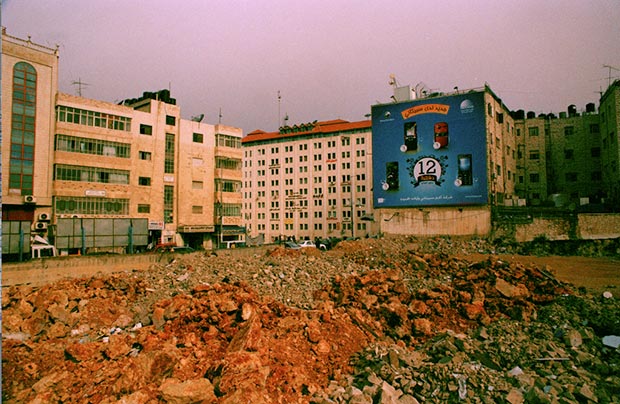 Yazan Kalili. Area A. 2010. Digital lambda C-type print. 65 x 100 cm / Courtesy of Lawrie Shabibi and the Artist
Yazan Kalili. Area A. 2010. Digital lambda C-type print. 65 x 100 cm / Courtesy of Lawrie Shabibi and the Artist
 Yazan Khalili. Area C 1. 2010. Digital lambda C-type print. 65 x 100 cm / Courtesy of Lawrie Shabibi and the Artist
Yazan Khalili. Area C 1. 2010. Digital lambda C-type print. 65 x 100 cm / Courtesy of Lawrie Shabibi and the Artist
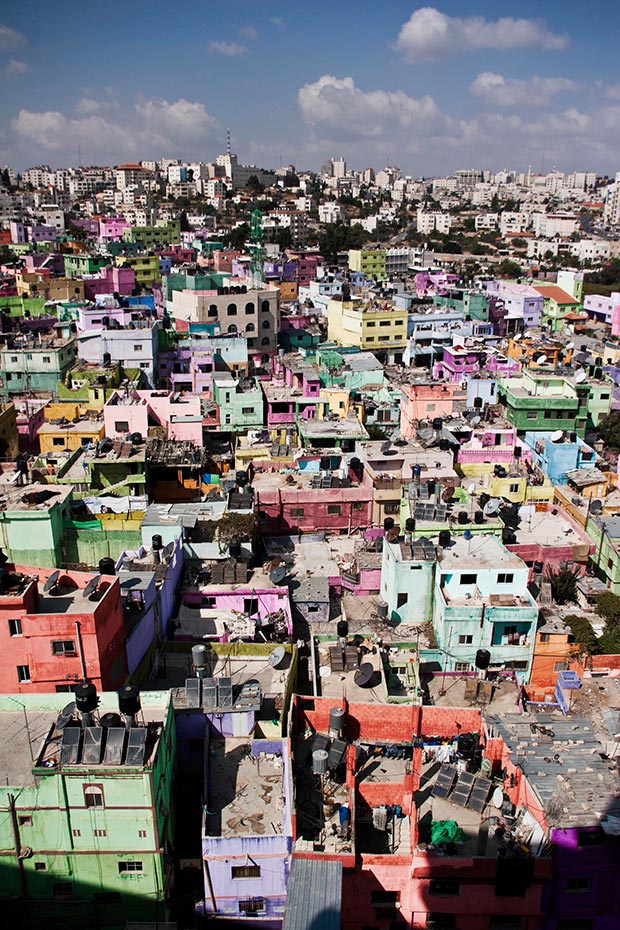 Yazan Khalili. Colour Correction 2. 2007-10. Lightjet on Kodak Premier. 177.5 x 115 cm / Courtesy of Lawrie Shabibi and the Artist
Yazan Khalili. Colour Correction 2. 2007-10. Lightjet on Kodak Premier. 177.5 x 115 cm / Courtesy of Lawrie Shabibi and the Artist
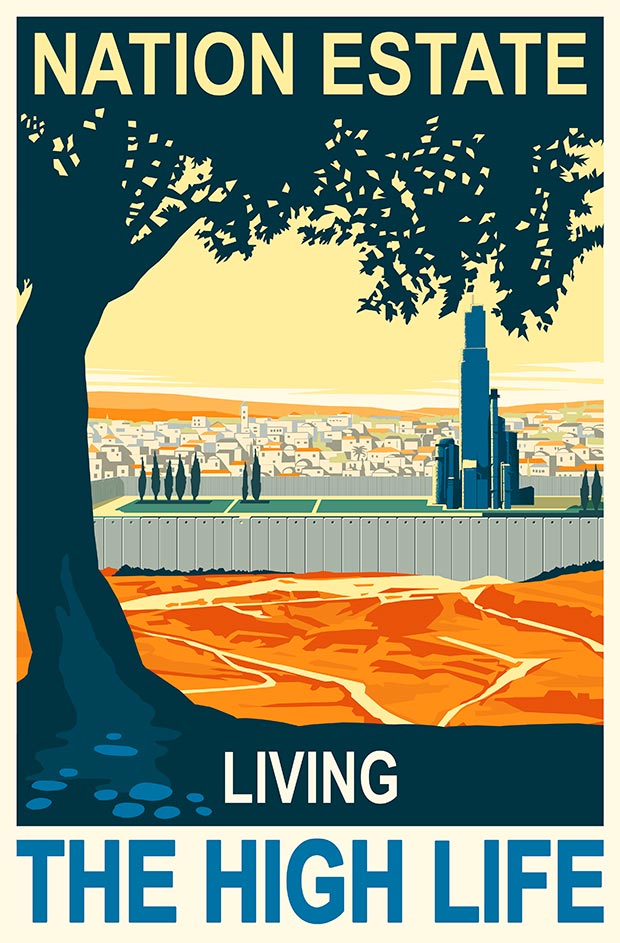 Larissa Sansour. Poster. 2012. Digital print on paper. 130 x 87 cm / Courtesy of Lawrie Shabibi and the Artist
Larissa Sansour. Poster. 2012. Digital print on paper. 130 x 87 cm / Courtesy of Lawrie Shabibi and the Artist
Ahrarnia presents new works from his khatam series (an Iranian micro-mosaic used decoratively to embellish domestic objects). As in his previous pictorial series, Ahrarnia references such qualities of the Russian Avant-Garde who greatly influenced the art and architecture of mid 20th century Iran, a cultural extension of the 19th century 'Great Game'. Ahrarnia’s three khatam works presented are based on the sparse compositions of Malevich, combing an aesthetic tradition to seminal 20th century Modernist works.
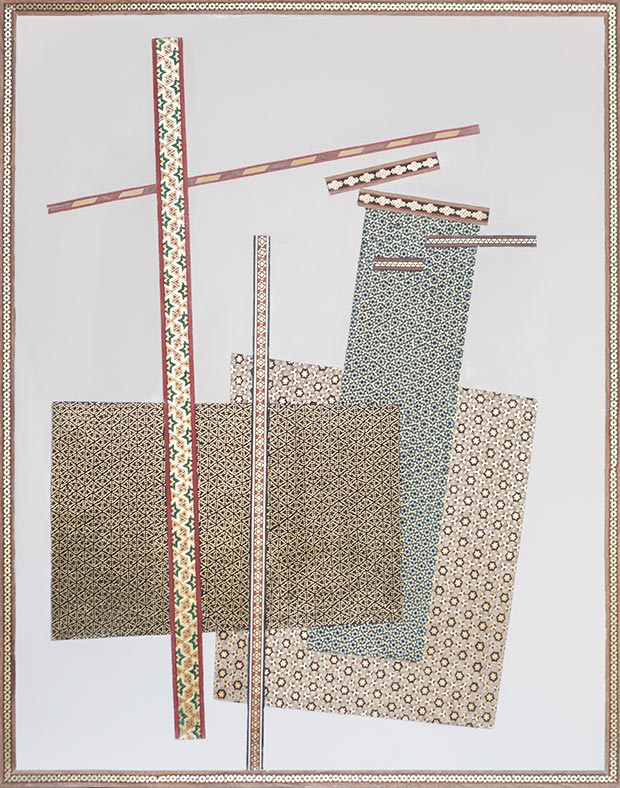 Farhad Ahrarnia. Invitation to the Voyage. 2015-16. 52 x 42 cm / Courtesy of Lawrie Shabibi and the Artist
Farhad Ahrarnia. Invitation to the Voyage. 2015-16. 52 x 42 cm / Courtesy of Lawrie Shabibi and the Artist
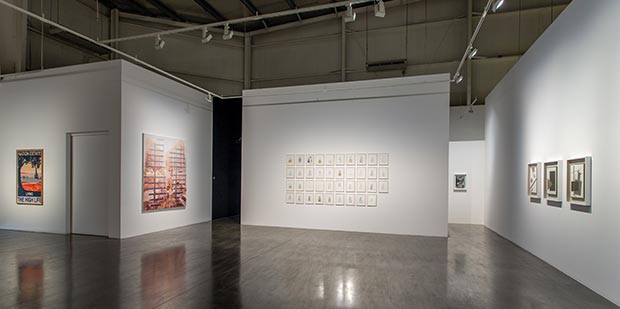 Installation view of Unseen: Summer Group Exhibition, from left to right: Larissa Sansour’s Poster (2012), Driss Ouadahi’s Motionless (2014); Shahpour Pouyan’s Memory Drawings (2015-16), Farhad Ahrarnia’s Liberté. Égalité. Fraternité (2015), The Inquisitive Man’s Dream, At One O’clock in the Morning and Invitation to the Voyage (2015-16) / Courtesy of Lawrie Shabibi and the Artists
Installation view of Unseen: Summer Group Exhibition, from left to right: Larissa Sansour’s Poster (2012), Driss Ouadahi’s Motionless (2014); Shahpour Pouyan’s Memory Drawings (2015-16), Farhad Ahrarnia’s Liberté. Égalité. Fraternité (2015), The Inquisitive Man’s Dream, At One O’clock in the Morning and Invitation to the Voyage (2015-16) / Courtesy of Lawrie Shabibi and the Artists
Pouyan’s presentation of 39 drawings symbiotically explores ideas of human preservation and perception of images. Pouyan was fascinated by the extraordinary shape of the tomb of the 11th century Muqarnas dome of Sharaf ad-Dawla, a mausoleum near Mosul, Iraq recently destroyed by ISIS. Prior to its destruction in October 2014 Pouyan had kept an image of it pinned to his studio wall, hoping that he would one day visit it. Devastated by the news of its destruction and the realization that he would never see a monument of this type, he devised a way to preserve the image. Each week he would make a drawing of the tomb from memory, emphasizing the details of the Muqarnas structure, form and ornamentation, with no recourse to the original image or his previous drawings. As his memories developed the drawings became a personal documentation of the human mind’s inability to accurately document. Pouyan’s allusion to the practices of oral history, the drawings of ancient explorers, and the processes by which an experience changes and evolves over time in our minds closely corresponds to the cross-fertilisation of ideas and images across borders prevalent to the Islamic world and Western Asia.
_.jpg) Shahpour Pouyan. Memory Drawings, 2015-16, 39 drawings. Mixed media on paper, 30.4 x 23 cm (each) / Courtesy of Lawrie Shabibi and the Artist
Shahpour Pouyan. Memory Drawings, 2015-16, 39 drawings. Mixed media on paper, 30.4 x 23 cm (each) / Courtesy of Lawrie Shabibi and the Artist
_Mixed-media-on-paper_30.4x23cm(each)_.jpg) Shahpour Pouyan. Memory Drawings, 2015-16, Detail. Mixed media on paper, 30.4 x 23 cm (each) / Courtesy of Lawrie Shabibi and the Artist
Shahpour Pouyan. Memory Drawings, 2015-16, Detail. Mixed media on paper, 30.4 x 23 cm (each) / Courtesy of Lawrie Shabibi and the Artist
Faulwell presents works from his ongoing series entitled Les Femmes D'Alger, an homage to the forgotten Algerian women who fought alongside their male counterparts in the war of independence from French occupation between 1954 - 1962. His works are intricately produced and involve poetic collaged paintings of these unique women based on photographs taken during their lifetimes. The repetition of images and the quasi-religious imagery he employs give the series the air of devotional shrines whilst the brightly coloured, elaborate, repetitive arrangements are reminiscent both of Henri Matisse's decorative patterning as well as Faulwell's own Iranian tradition of geometric design.
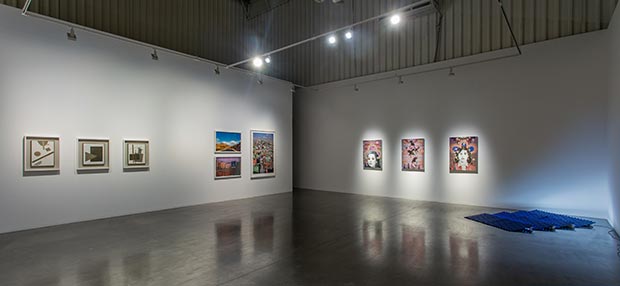 Installation view of Unseen: Summer Group Exhibition, from left to right: Farhad Ahrarnia’s The Inquisitive Man’s Dream, At One O’clock in the Morning and Invitation to the Voyage (2015-16), Yazan Khalili’s Area A (2010), Area C/1 (2010) and Colour Correction 2 (2007-10), Asad Faulwell’s Les Femmes D’Alger #61, 62 and 30 (2016) and Nathaniel Rackowe’s LP25 (2009-14) / Courtesy of Lawrie Shabibi and the Artists
Installation view of Unseen: Summer Group Exhibition, from left to right: Farhad Ahrarnia’s The Inquisitive Man’s Dream, At One O’clock in the Morning and Invitation to the Voyage (2015-16), Yazan Khalili’s Area A (2010), Area C/1 (2010) and Colour Correction 2 (2007-10), Asad Faulwell’s Les Femmes D’Alger #61, 62 and 30 (2016) and Nathaniel Rackowe’s LP25 (2009-14) / Courtesy of Lawrie Shabibi and the Artists
Ouadahi and Rackowe continue their preoccupation with urban environments: Ouadahi through paintings of urban structures that share a dreamlike perspective blurring between reality and the artist’s imagination and in the case of Rackowe through a sculpture that mixes construction materials with neon lights along the gallery’s floor.
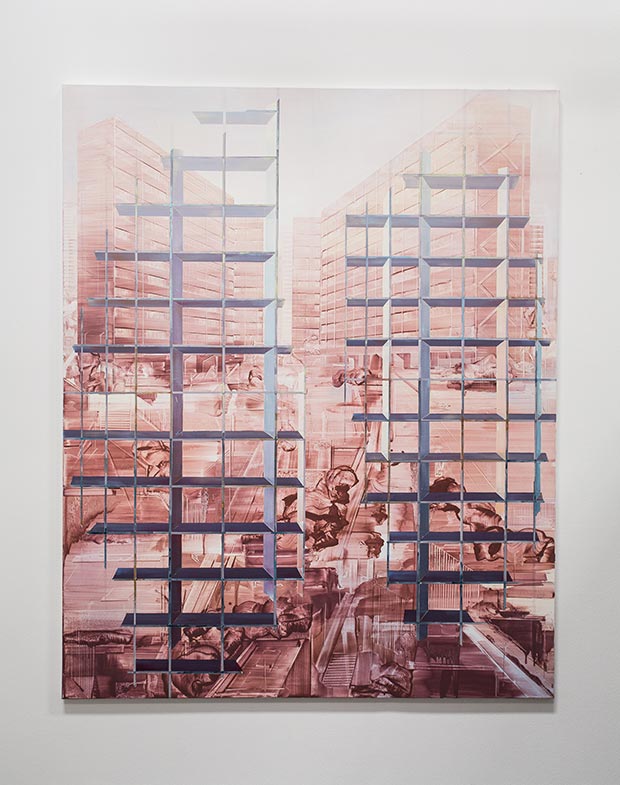 Driss Ouadahi. Motionless. 2014. Oil on canvas. 210 x 170 cm / Courtesy Lawrie Shaibi and the Artist
Driss Ouadahi. Motionless. 2014. Oil on canvas. 210 x 170 cm / Courtesy Lawrie Shaibi and the Artist
 Nathaniel Rackowe. LP25. 2009-14. Corrugated roofing sheets, fluorescent lights. 15 x 200 x 20 cm / Courtesy of Lawrie Shabibi and the Artist
Nathaniel Rackowe. LP25. 2009-14. Corrugated roofing sheets, fluorescent lights. 15 x 200 x 20 cm / Courtesy of Lawrie Shabibi and the Artist
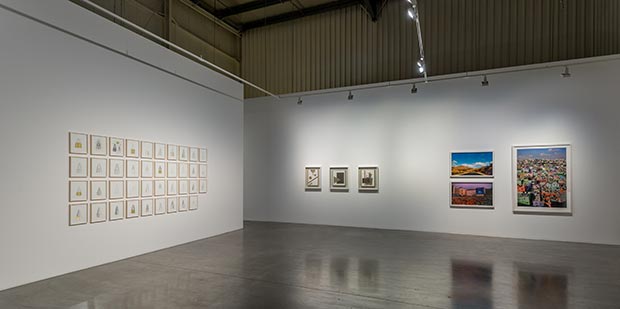 Installation view of Unseen: Summer Group Exhibition, from left to right: Shahpour Pouyan’s Memory Drawings (2015-16), Farhad Ahrarnia’s The Inquisitive Man’s Dream, At One O’clock in the Morning and Invitation to the Voyage (2015-16) and YazanKhalili’s Area A (2010), Area C/1 (2010) and Colour Correction 2 (2007-10) / Courtesy of Lawrie Shabibi and the Artists.
Installation view of Unseen: Summer Group Exhibition, from left to right: Shahpour Pouyan’s Memory Drawings (2015-16), Farhad Ahrarnia’s The Inquisitive Man’s Dream, At One O’clock in the Morning and Invitation to the Voyage (2015-16) and YazanKhalili’s Area A (2010), Area C/1 (2010) and Colour Correction 2 (2007-10) / Courtesy of Lawrie Shabibi and the Artists.
Lawrie Shabibi is a contemporary art gallery housed at Dubai's Alserkal Avenue. The gallery supports the long-term development of the careers of young international contemporary artists with a focus on those from the Middle East and North Africa. The gallery also organizes art historical exhibitions working with an older generation of artists from the region. Liaising with curators, institutions, museums and collectors the gallery has successfully introduced international artists to the region whilst at the same time presented Middle Eastern artists to the international contemporary arts community. By holding a regular programme of exhibitions, screenings and talks, publishing catalogues and participating in international art fairs, Lawrie Shabibi has in the space of five years been a forerunner in the development of the contemporary art scene in Dubai.
Comments
Add a comment